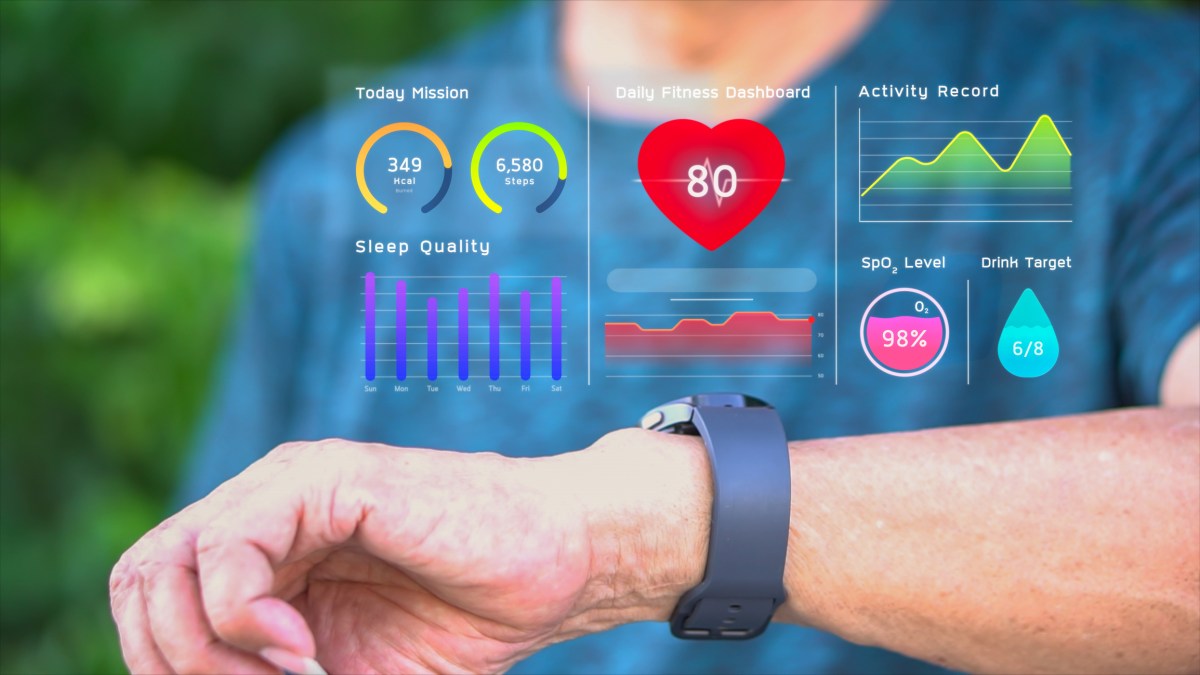As technology continues to reshape nearly every facet of daily life, the wellness industry is embracing a new era of precision and personalization driven by artificial intelligence. Smart wearables, AI-powered fitness apps and at-home diagnostic tools are rapidly evolving to offer tailored recommendations for workouts, sleep, and nutrition—delivered in real time.
Never miss a story
This convergence of health data and machine learning is transforming how people monitor their well-being, providing insight that was once limited to clinical settings. The goal is clear: empower individuals to make informed choices based on their unique physiological needs and ultimately improve long-term health outcomes.
Smart wearables, including watches, rings and patches, have become central to this movement.
These devices continuously track metrics such as heart rate, respiratory rate, body temperature, sleep stages and activity levels. Advanced models even monitor heart rate variability and blood oxygen saturation, offering a deeper view into stress and recovery cycles. AI systems analyze this data to deliver daily recommendations tailored to the wearer’s current physical state, guiding decisions on exercise intensity, rest, hydration, and nutrition.
The shift toward data-driven wellness is not limited to elite athletes or tech-savvy early adopters. A growing number of consumers are using these tools as part of everyday routines. Whether the goal is weight loss, better sleep or improved energy, AI algorithms can now adjust recommendations based on progress, setbacks or real-time changes in behavior and biometrics.
Fitness apps powered by AI take personalization even further. These platforms can design custom workout plans that evolve with the user, adapting based on performance metrics and feedback.
If a user skips a workout, reports fatigue or shows elevated stress levels via wearable data, the app might adjust the next session to focus on mobility instead of high-intensity training. This level of responsiveness helps users stay engaged and avoid burnout or injury.
Nutrition tracking has also entered the AI space, with apps capable of analyzing food logs, biometric trends, and gut health data to make customized dietary suggestions. Some platforms now integrate data from continuous glucose monitors or microbiome tests, offering real-time insights into how specific foods affect energy, mood and metabolic response.
At-home diagnostics are another critical piece of the puzzle. Lab kits for blood biomarkers, hormonal panels and DNA testing allow individuals to gather detailed health information without visiting a clinic.
AI platforms synthesize these results with daily data from wearables to create highly personalized wellness plans. In many cases, users receive dashboards or reports with suggestions on everything from supplement regimens to optimal bedtime windows.
A broader national push toward preventive health is driving the momentum behind this technology. One notable example is the Modern American Health Alliance (MAHA), an emerging public-private initiative aimed at combating obesity and chronic disease through continuous health monitoring. The initiative supports widespread adoption of wearable health devices and advocates for integrating AI-driven tools into public health strategies.
MAHA’s framework encourages individuals to share anonymized data with health agencies and providers to support population-level insights and improve early detection of health risks.
The initiative positions AI wearables as key to solving systemic challenges like rising obesity rates, diabetes prevalence and sedentary lifestyles. By tracking physical activity, caloric burn and heart health metrics across a population, officials hope to develop more targeted interventions and public health campaigns.
While the promise of AI-powered wellness is vast, challenges remain. Privacy concerns are significant, as these systems collect sensitive health data that could be misused if not properly safeguarded.
Transparency in how AI models operate and make recommendations is also under scrutiny, particularly as these platforms influence decisions that impact health and well-being.
In addition, there is a growing need to ensure that the benefits of personalized wellness are accessible to all, not just those who can afford premium devices or subscription services. Some public health experts are calling for subsidized wearables or insurance reimbursements to bridge the gap and ensure equitable access to these tools.
Despite these concerns, enthusiasm for AI in wellness continues to build. As users experience the convenience and effectiveness of tailored health recommendations, adoption rates are climbing across age groups and demographics.
For many, the daily feedback loop offered by wearables and smart apps creates a sense of accountability and motivation that traditional health advice often lacks.
The integration of AI into personal wellness marks a fundamental shift in how health is managed.
Rather than relying solely on annual check-ups or generalized fitness plans, individuals now have access to dynamic, real-time support designed specifically for their bodies and goals. This shift has the potential not only to improve individual outcomes but to reduce healthcare costs by focusing on prevention instead of treatment.
As innovation accelerates and AI platforms become more sophisticated, the future of wellness may become increasingly automated, data-driven and hyper-personalized. For users, that means greater control over their health journey—and the potential to live longer, healthier lives guided by intelligent insight at every step.


































